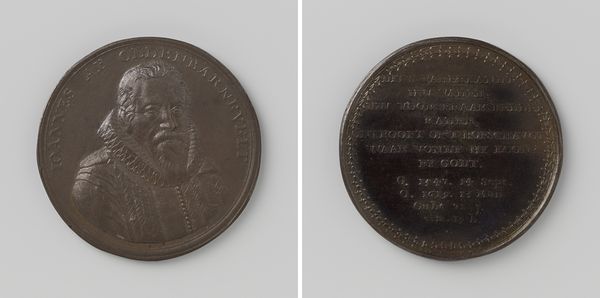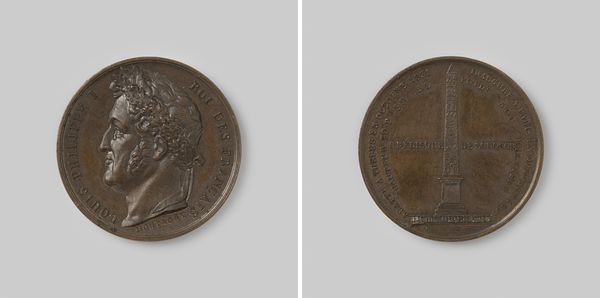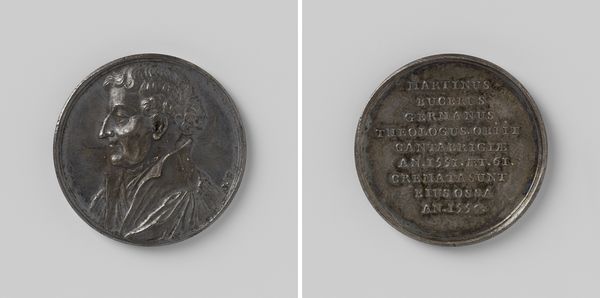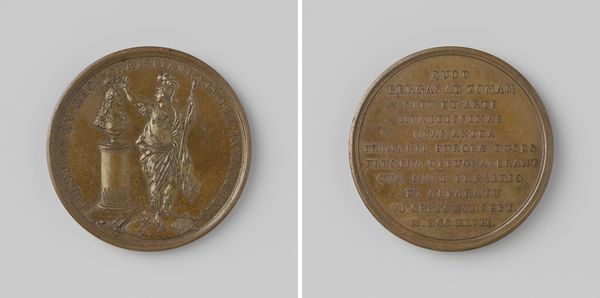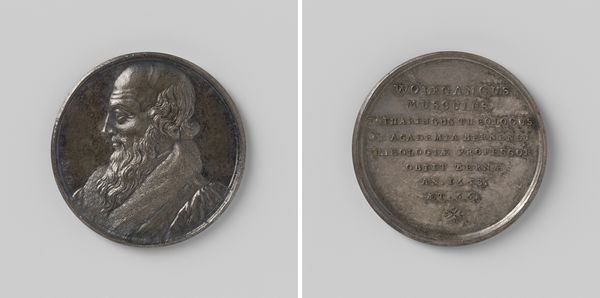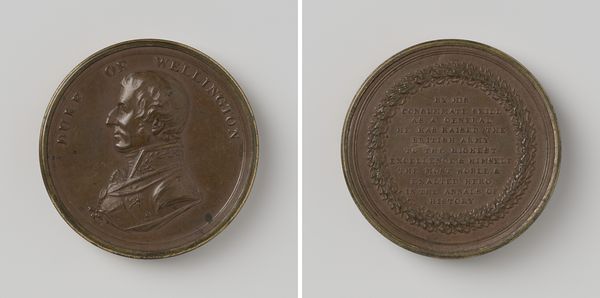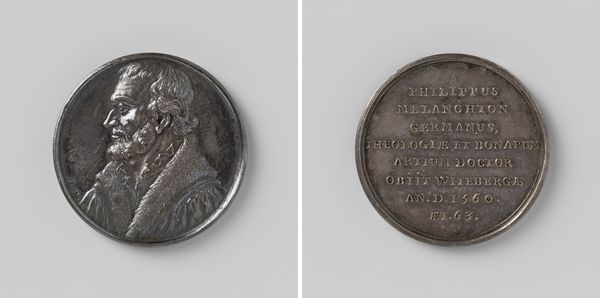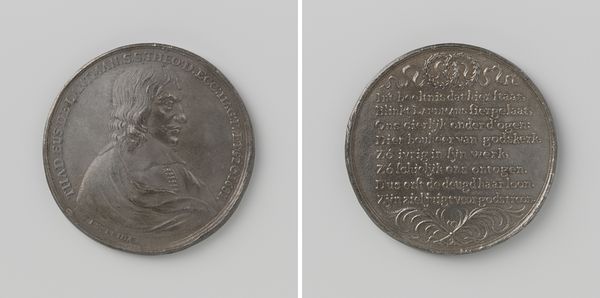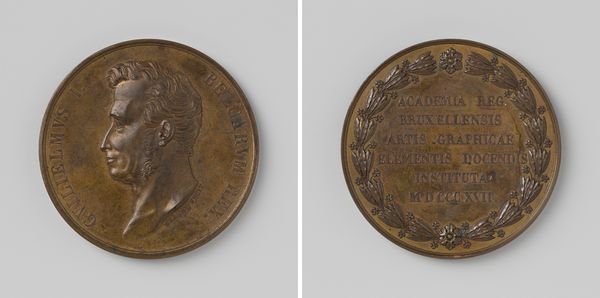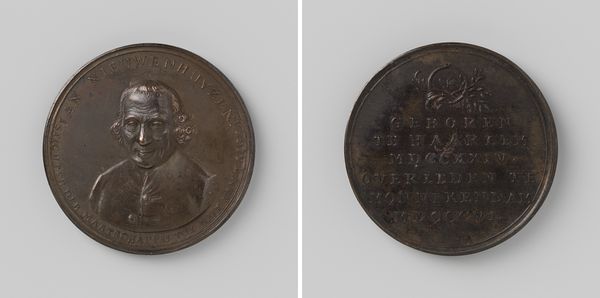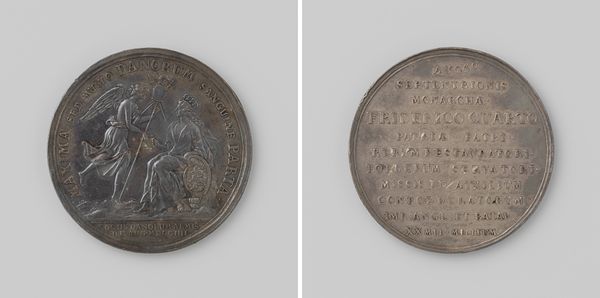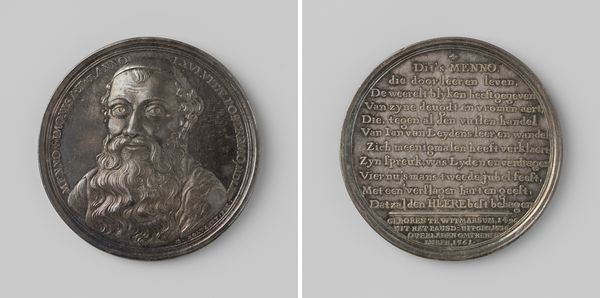
relief, bronze
#
portrait
#
neoclassicism
#
relief
#
bronze
#
history-painting
Dimensions: diameter 3 cm, weight 10.50 gr
Copyright: Rijks Museum: Open Domain
Curator: Today, we are observing a bronze relief currently held at the Rijksmuseum titled "Herbouw van de afgebrande Nieuwe Luthersche kerk te Amsterdam," dating back to 1826. Editor: My immediate impression is one of muted solemnity; the color is austere, almost grave. Is it meant to evoke a memorial tone? Curator: Functionally, as a relief in bronze, this piece exists both as commemorative object and as small-scale history painting cast for a wider audience. I think that’s what strikes one so profoundly. The portrait bust is handled masterfully, recalling certain neoclassical idioms of the time. Editor: Neoclassical, but the material is itself intriguing. Why bronze? Its durability speaks volumes about intended longevity. The texture, too; was it cast in one piece, or were there separate molds involved? And, beyond technique, what narratives were enabled, or perhaps, occluded through that material selection? Was it commissioned by the church itself, or by civic authorities, and what implications does this provenance hold for how we interpret its content and intent? Curator: Those are very incisive points! The choice of bronze certainly lends a sense of timelessness to what is essentially a depiction of a singular historical moment. Editor: And the inscription… How was it produced? Curator: Presumably also part of the casting process, lending a unity of form and content to the piece. Notice the symmetry inherent in its construction. I see that same intentional structure repeated throughout. It almost abstracts the specific event into a kind of formal pronouncement about faith and perseverance. Editor: Exactly! Its deliberate construction points towards the social and historical context that enabled it. These kinds of details enrich its narrative possibilities beyond the surface memorial function. Curator: Absolutely. In closing, this bronze relief transcends its immediate historical context to embody broader themes of resilience and historical commemoration, offering insight into both individual faith and collective endeavor. Editor: Indeed, it’s in examining the materials, the making, and the socio-political frameworks that gave shape to objects such as this where the object truly reveals itself as testament and trace.
Comments
No comments
Be the first to comment and join the conversation on the ultimate creative platform.
